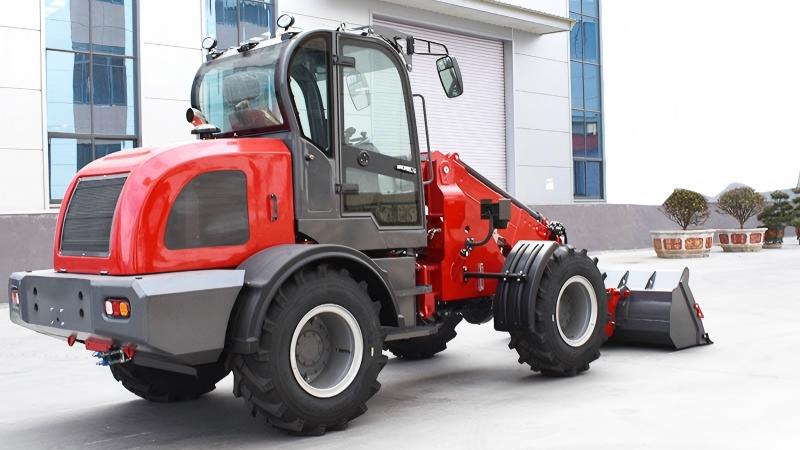Operating a telescopic loader, a powerful and versatile piece of machinery, demands an unwavering commitment to safety, a commitment that begins long before the engine is even started. The cornerstone of this safety culture is a meticulous and comprehensive daily pre-operation inspection, a non-negotiable ritual that serves as the first line of defense against potential workplace accidents and equipment failures. This process is far more than a cursory glance; it is a systematic journey around and through the machine, designed to identify any signs of wear, damage, or malfunction that could compromise safe operation. The consequences of neglecting these essential checks can be severe, ranging from minor mechanical breakdowns that cause costly project delays to catastrophic incidents leading to serious injury, loss of life, or significant property damage. Therefore, this daily routine is not merely a procedural formality but a fundamental ethical and operational responsibility for every operator, ensuring that the machine is in a known, safe state before it is entrusted with any load or tasked with any maneuver. The inspection begins with a thorough walk-around, a visual and physical assessment of the loader's overall condition, checking for any obvious leaks, structural cracks, or tire damage, while also ensuring that all safety decals and manuals are present and legible, thus setting the stage for a deeper, more focused examination of its core systems and components.
The second phase of the essential daily safety check delves into the heart of the telescopic loader's mechanical and hydraulic integrity, focusing on the systems that grant it its unique capabilities and, consequently, its potential hazards. Operators must methodically inspect the boom structure itself, looking for any signs of cracking, welding defects, or undue wear on the sheaves and pins. The hydraulic system demands particular attention; a careful examination for leaks, both from hoses and cylinders, is paramount, as hydraulic fluid under extreme pressure can cause injection injuries or system failure. All hose connections must be checked for tightness and any signs of abrasion or deterioration. Furthermore, the functionality of the boom extension and retraction mechanisms must be verified, ensuring smooth operation without any unusual noises or jerky movements that could indicate internal damage. The load chain or wire rope, if applicable, should be inspected for broken strands, excessive wear, or deformation. Critically, the operator must test the machine's safety interlocks and emergency descent systems to confirm they are operational, providing a vital failsafe in the event of a primary system malfunction. This rigorous examination of the machine's dynamic components is indispensable for verifying that the complex interplay of hydraulics and mechanics that defines the telescopic loader is functioning as designed, thereby mitigating the risk of a sudden, uncontrolled equipment failure during operation.
A third, equally crucial dimension of the daily pre-operation safety protocol involves a detailed verification of the loader's controls, safety devices, and the immediate work environment. Before mounting the machine, the operator should check the functionality of all lights, horns, and alarms, which are essential for communication and visibility on a busy worksite. Once in the cab, the operator must ensure that the seat belt is functional and that the Roll-Over Protective Structure (ROPS) and Falling Object Protective Structure (FOPS) are intact and show no signs of damage. All control levers and switches should be tested for proper response and smooth operation without any sticking or binding. The operator must familiarize themselves with the specific load charts for the day, considering the machine's configuration and any attachments, and verify that all rated capacity indicators (RCIs) or load moment systems are calibrated and functional. Simultaneously, a critical part of the safety check is an assessment of the intended work area. The operator must identify and account for potential hazards such as uneven ground, overhead obstructions like power lines, proximity to trenches, and the presence of other personnel. Establishing clear communication protocols and ensuring the work zone is properly marked and controlled are integral steps that complete this holistic safety assessment, bridging the gap between machine readiness and situational awareness.
Finally, the culmination of these exhaustive daily checks is the formal documentation and the operator's conscious commitment to safe practice. Every inspection, from the initial walk-around to the final control test, must be meticulously recorded in a logbook or digital system, noting any defects found and the corrective actions taken. This documentation creates a vital legal and maintenance record, fostering accountability and providing a historical overview of the machine's health. If any critical issues are identified during the inspection, the operator has a clear and non-negotiable duty to immediately red-tag the equipment, report the fault to a supervisor, and remove it from service until qualified mechanics have performed the necessary repairs. Under no circumstances should a machine with a known safety-critical defect be operated. This disciplined approach to pre-operation checks, combined with comprehensive operator training and a proactive maintenance culture, forms an impenetrable safety ecosystem. It empowers the operator, protects the workforce, safeguards the asset, and ensures that the immense power of the telescopic loader is harnessed productively and safely, day in and day out, making these daily rituals the most important investment in any construction, agricultural, or industrial operation.
Post time:Nov.18.2025



